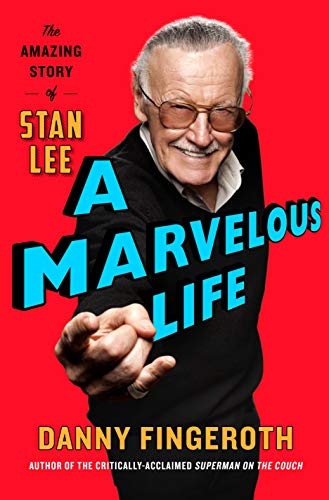
The comprehensive biography of STAN LEE, father of SPIDER-MAN and THE AVENGERS, beloved comicbook writer and editor, and former president and publisher of Marvel Comics, by Lee’s colleague of over four decades.
Stan Lee co-created SPIDER-MAN! And IRON MAN! And the HULK! And the X-MEN! And more than 500 other iconic characters! His name has appeared on more than a billion comic books, in 75 countries, in 25 languages. His superheroes have starred in multibillion-dollar grossing movies and TV series. This is the story of how Stanley Martin Lieber, a poor kid from Washington Heights became STAN LEE, international legend.
Danny Fingeroth (comics industry veteran, author, and longtime Stan Lee friend and colleague) writes a comprehensive biography of this powerhouse of ideas who changed the world’s understanding of what a hero is and how a story should be told, while exploring Lee’s unique path to becoming the face of comics.
With behind-the-scenes stories and sourced with exclusive, new interviews with Lee himself and other legendary comics and media figures, A Marvelous Life has insights and revelations that only an insider like Fingeroth can offer.
Fingeroth, himself a longtime writer and editor at Marvel Comics and now a lauded pop culture critic and historian, knew and worked closely with Stan Lee for over forty years. Fingeroth is able to put Lee’s life and work in a context that makes events and actions come to life as no other writer could.
Format : Format Kindle
Nombre de pages de l’édition imprimée : 320 pages
Editeur : St. Martin’s Press (1 octobre 2019)
Vendu par : Amazon Media EU S.à r.l.
Langue : Anglais
ASIN: B07PBCSVP9